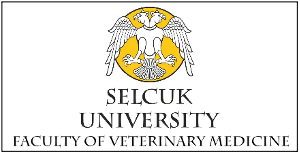| 2017, Cilt 33, Sayı 1, Sayfa(lar) 026-033 |
| [ Türkçe Özet ] [ PDF ] [ Benzer Makaleler ] |
| A Light microscopic investigation on the histology and alpha-naphthyl acetate esterase (ANAE)- and acid phosphatase (ACP-ase) positive lymphocyte localization in the hemal nodes of Yaks (Bos grinniens) |
| Nariste Kadıralieva1, Emrah Sur2, Tuğba Özaydın2, Şamil Sefergil3 |
| 1Kırgızistan-Türkiye Manas Üniversitesi, Veteriner Fakültesi, Histoloji ve Embriyoloji ABD, Bişkek, Kırgızistan 2Selçuk Üniversitesi, Veteriner Fakültesi, Histoloji ve Embriyoloji ABD, Kampüs, 42075, Konya, Türkiye 3Kırgızistan-Türkiye Manas Üniversitesi, Veteriner Fakültesi, Anatomi ABD, Bişkek, Kırgızistan |
| Keywords: Yak, hemal node, ANAE, ACP-ase |
| Downloaded:1807 - Viewed: 2264 |
|
Aim: This study was performed to determine the histologic
structure and localization of the alpha-naphthyl acetate
esterase (ANAE)-and acid phosphatase (ACP-ase) positive
lymphocytes in hemal nodes of Kyrgyzstan's mountain Yaks
(Bos grinniens).
Materials and Methods: For this purpose, tissue samples from hemal nodes of six, 2–4 year-old-aged Kyrgyzstan's mountain Yaks were used. After processing, tissue sections were taken and stained with Crossmon's trichrome stain. In frozen sections, alpha-naphthyl acetate esterase (ANAE) and acid phosphatase (ACP-ase) were demonstrated. Results: The results showed that the hemal nodes were surrounded by a highly thick connective tissue capsule involving smooth muscle fibers and had a very large sinus system compromised by subcapsular and deep sinuses filled with blood. Cortical and medullar regions were not definite. Lymphatic nodules and cords were observed in the deeper region of hemal nodes. ANAE- and ACP-ase positive lymphocytes localized especially in the margin of the lymphatic nodules and also interfollicular areas. Conclusions: Yaks are very important animals for Krygyzstan economi as food source because they provide milk, milk products, meat, and meat products. Besides, yaks can survive and adaptable to the highly extreme ecological conditions such as high altitude, very low annual average temperature, short growing season for calf, and great seasonal variation in feed supply. So it is thought that extensive research regarding this species must be planned. |
| [ Türkçe Özet ] [ PDF ] [ Benzer Makaleler ] |




